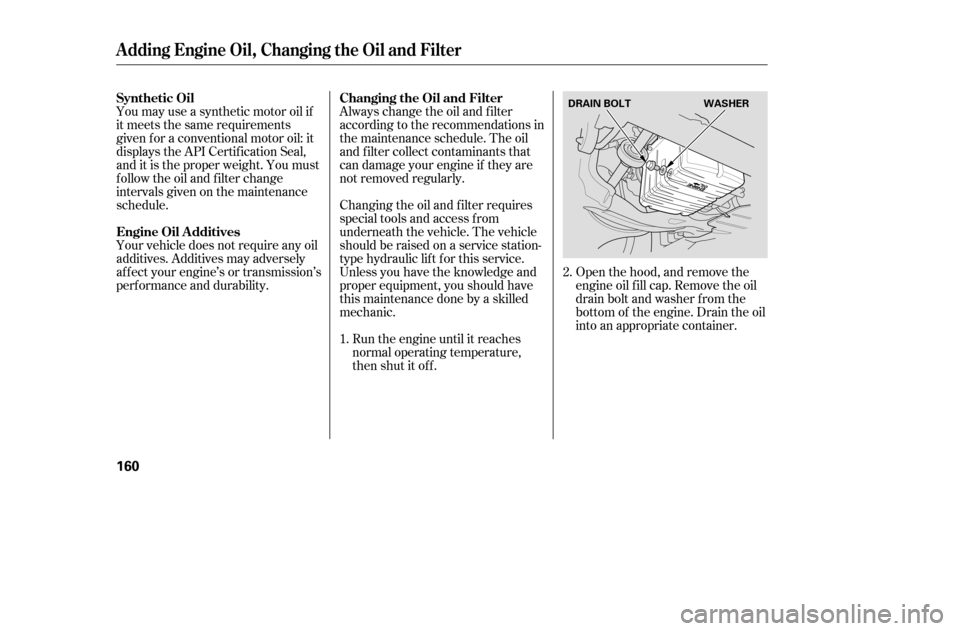Page 148 of 226
(f or Normal and Severe Schedules)Maintenance Record
156
55,000 mi
60,000 mi
65,000 mi
70,000 mi
75,000 mi80,000 mi
85,000 mi
90,000 mi
95,000 mi
100,000 mi
88,000 km
96,000 km
104,000 km
112,000 km
120,000 km Signature or dealer stamp
128,000 km
136,000 km
144,000 km
152,000 km
160,000 kmSignature or dealer stamp
mi/km
mi/km
mi/km
mi/km
mi/km
DateDateDateDateDate DateDateDateDateDate
mi/km
mi/km
mi/km
mi/km
mi/km
�����—�����—�����y�
�������������y���
�(���%�������y���
�����y
Page 149 of 226
(f or Normal and Severe Schedules)Maintenance Record
Maint enance
157
105,000 mi
110,000 mi
115,000 mi
120,000 mi
125,000 mi130,000 mi
135,000 mi
140,000 mi
145,000 mi
150,000 mi
168,000 km
176,000 km
184,000 km
192,000 km
200,000 km Signature or dealer stamp
208,000 km
216,000 km
224,000 km
232,000 km
240,000 kmSignature or dealer stamp
mi/km
mi/km
mi/km
mi/km
mi/km mi/km
mi/km
mi/km
mi/km
mi/km
DateDateDateDateDate DateDateDateDateDate
�����—�����—�����y�
�������������y���
�(���%�������y���
�����y
Page 152 of 226

Always change the oil and f ilter
according to the recommendations in
the maintenance schedule. The oil
and f ilter collect contaminants that
can damage your engine if they are
not removed regularly.
Changing the oil and f ilter requires
special tools and access f rom
underneath the vehicle. The vehicle
should be raised on a service station-
type hydraulic lif t f or this service.
Unless you have the knowledge and
proper equipment, you should have
this maintenance done by a skilled
mechanic.Run the engine until it reaches
normal operating temperature,
then shut it off. Open the hood, and remove the
engine oil f ill cap. Remove the oil
drain bolt and washer f rom the
bottom of the engine. Drain the oil
into an appropriate container.
You may use a synthetic motor oil if
it meets the same requirements
given f or a conventional motor oil: it
displays the API Certif ication Seal,
and it is the proper weight. You must
f ollow the oil and f ilter change
intervals given on the maintenance
schedule.
Your vehicle does not require any oil
additives. Additives may adversely
af f ect your engine’s or transmission’s
perf ormance and durability.
1.2.
Changing the Oil and Filter
Synthetic Oil
Engine Oil A dditives
A dding Engine Oil, Changing the Oil and Filter
160
DRAIN BOLT WASHER
�����—�����—�����y�
�������������y���
�(���%�������y���
�����y
Page 158 of 226

If the level is below the lower
mark, add f luid into the f iller hole
to bring it to the upper mark (On
CVT model, the HOT side’s upper
mark).
Remove the dipstick and check the
f luid level. There is a HOT side and a
COLD side on the dipstick. It should
be between the upper and lower
marks on the HOT side. To thoroughly f lush the transmission,
the technician should drain and ref ill
it with Honda ATF-Z1, then drive the
vehicle f or a short distance. Do this
three times. Then drain and ref ill the
transmission a final time.
Insert the dipstick all the way back
into the transmission securely as
shown in the illustration.
If you are not sure how to add f luid,
contact your dealer.
The transmission should be drained
and ref illed with new f luid according
to the time and distance recommen-
dations in the maintenance schedule.
Pour the f luid slowly and caref ully
so you do not spill any. Clean up
any spills immediately; it could
damage components in the engine
compartment.
Always use Honda ATF-Z1
(Automatic Transmission Fluid). If
it’s not available, you may use a
DEXRON
III automatic
transmission f luid as a temporary
replacement. However, continued
use can af f ect the shif t quality.
Have the transmission f lushed and
ref illed with Honda ATF-Z1 as
soon as it is convenient.
5.
6.
On CVT model
Automatic Transmission Fluid
166
UPPER MARK
DIPSTICK (CVT)
LOWER MARK
�����—�����—�����y�
�������������y���
�(���%�������y���
�����y
Page 159 of 226

If Honda MTF is not available, you
may use an SAE 10W-30 or 10W-40
viscosity motor oil with the API
Certif ication seal that says ‘‘FOR
GASOLINE ENGINES’’ as a
temporary replacement. However,
motor oil does not contain the proper
additives, and continued use can
cause stiffer shifting. Replace as
soon as it is convenient.
The transmission should be drained
and ref illed with new f luid according
to the time and distance recommen-
dations in the maintenance schedule.
Check the f luid level with the
transmission at normal operating
temperature and the vehicle sitting
on level ground. Remove the
transmission f iller bolt, and caref ully
f eel inside the bolt hole with your
f inger. The f luid level should be up
to the edge of the bolt hole. If it is
not, add Honda Manual
Transmission Fluid (MTF) until it
starts to run out of the hole. Reinstall
the f iller bolt, and tighten it securely. If you are not sure how to check and
add f luid, contact your dealer.
Manual T ransmission Fluid
Maint enance
167
FILLER BOLT
Correct Level
�����—�����—�����y�
�������������y���
�(���%�������y���
�����y
Page 160 of 226

The f luid level should be between
theMINandMAXmarksontheside
of the reservoir. If the level is at or
below the MIN mark, your brake
system needs attention. Have the
brake system inspected f or leaks or
worn brake pads.The f luid level should be between
theMINandMAXmarksontheside
of the reservoir. If it is not, add
brake f luid to bring it up to that level.
Use the same fluid specified for the
brake system.
Check the f luid level in the brake
f luid reservoir monthly.
Replace the brake f luid according to
the time recommendation in the
maintenance schedule.
Brake f luid marked DOT 5 is not
compatible with your vehicle’s
braking system and can cause
extensive damage.
Using any non-Honda brake f luid can
cause corrosion and decrease the lif e
of the system. Have the brake
system f lushed and ref illed with
Honda Heavy Duty Brake Fluid
DOT 3 as soon as possible.
Always use Honda Heavy Duty
Brake Fluid DOT 3. If it is not
available, you should use only DOT 3
or DOT 4 f luid, f rom a sealed
container, as a temporary
replacement.
A low f luid level can indicate a leak
in the clutch system. Have this
system inspected as soon as possible.
Manual Transmission only
Clutch Fluid
Brake System
Brake and Clutch Fluid
168
MAX
MIN MAX
MIN
�����—�����—�����y�
�������������y���
�(���%�������y���
���
�y
Page 161 of 226

�µ�µ
Check the level on the side of the
reservoir when the engine is cold.
The f luid should be between the
UPPER LEVEL and LOWER LEVEL.
If not add power steering f luid to the
UPPER LEVEL mark. Always use Honda Power Steering
Fluid. You may use another power
steering f luid as an emergency
replacement, but have the power
steering system f lushed and ref illed
with Honda PSF as soon as possible.
A low power steering f luid level can
indicate a leak in the system. Check
the f luid level f requently, and have
the system inspected as soon as
possible.
The timing belt should be replaced
at the intervals shown in the
maintenance schedule. Replace the
belt at 60,000 miles (100,000 km) if
you regularly drive your vehicle in
one or more of these conditions:
In very high temperatures
(over 110°F, 43°C).
In very low temperatures
(under 20°F, 29°C).
Pour the f luid slowly and caref ully so
you do not spill. Clean up any spills
immediately; it could damage
components in the engine
compartment.
Power Steering Fluid
T iming Belt
Power Steering Fluid, Timing Belt
Maint enance
169
UPPER LEVEL
LOWER LEVEL
T urning the steering wheel to f ull lef t
or right lock and holding it there can
damage the power steering pump.
�����—�����—�����y�
�������������y���
�(���%�������y���
�����y
Page 170 of 226

Keeping the tires properly inf lated
provides the best combination of
handling, tread lif e, and riding
comf ort.Underinf lated tires wear unevenly,
adversely affect handling and fuel
economy, and are more likely to
fail from being overheated.
Overinf lated tires can make your
vehicleridemoreharshly,are
more prone to damage f rom road
hazards, and wear unevenly.
We recommend that you visually
check your tires every day. If you
think a tire might be low, check it
immediately with a tire gauge.
The f ollowing pages give more
detailed inf ormation on how to take
care of your tires and what to do
when they need to be replaced.
To saf ely operate your vehicle, your
tires must be the proper type and
size, in good condition with adequate
tread, and correctly inf lated.
Use a gauge to measure the air
pressure in each tire at least once a
month. Even tires that are in good
condition may lose one to two psi (10
to 20 kPa, 0.1 to 0.2 kgf /cm ) per
month. Remember to check the
sparetireatthesametime.
Check the air pressures when the
tires are cold. This means the
vehicle has been parked f or at least
three hours, or driven less than 1
mile (1.6 km). Add or release air, if
needed, to match the recommended
cold tire pressures on page .
179
Tires
Inf lation Guidelines
178
Using tires that are excessively
worn or improperly inflated can
cause a crash in which you can
be seriously hurt or killed.
Follow all instructions in this
owner’s manual regarding tire
inflation and maintenance.
�����—�����—�����y�
������
������y���
�(���%�������y���
���
�y